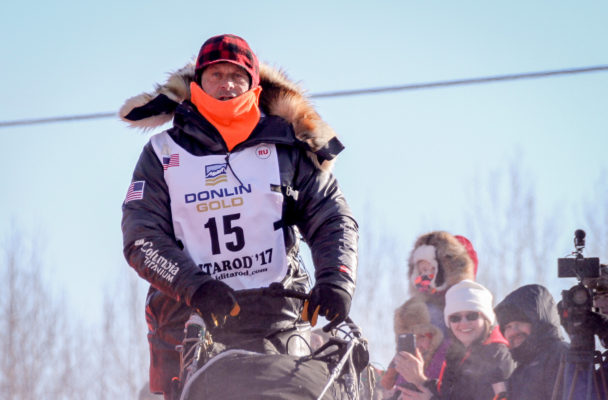
Last year, Martin Buser had a tough Iditarod. He finished in 37th place, his lowest position on the leader-board in a decades-long career. But this year, as the four-time champion charges through the race’s early checkpoints, a lot of things are going better.
In 2016, Buser had a bad fall on the stretch of trail heading from Kaltag toward Unalakleet. With more than two hundred miles to go, he was barely able to walk far enough to water all his dogs.
“Well that was actually, it ended up being a pretty well-torn hamstring,” Buser said. “It was very, very painful, and by the time I got to Nome it was as big a bruise as I have ever seen. It took almost the whole year to heal-up.”
At the time, Buser was preoccupied. His son Nikolai was in a terrible car accident a few weeks earlier, and was receiving treatment in Seattle. But now he’s well enough that his dad jokes he can start looking for a job.
“We joke that this might be the first year in 28 years when I don’t have to worry about the children,” Buser said. “So this is gonna be about just the dogs and myself.”
Buser is experimenting with a few new elements in this year’s race. He’s testing a clothing system for the Columbia sportswear brand. And he has a new gang-line system for wrangling the dogs into a straighter pulling formation. The team itself is a mix of old and new.
“It’s a very seasoned team of experienced dogs between one Iditarod experience team and six or seven,” Buser said. “So it’s a nice tapper, a nice stagger between oldest being seven-and-a-half and youngest being two-and-a-half. Well-balanced team.”
Buser sounds almost excited as he explains his plans to rest along the longer legs of the early trail, even with overnight temperatures forecasted to dip beneath 30 below.
“I’ll be camping a lot,” Buser said. “I’ll have my tent again; I have a tiny little light-weight tent that I incorporated in my gear, and I’ll be totally self-contained and totally happy to be that. Privacy, comfort, and you’re totally independent of the checkpoints by doing that.”
Buser, who ran his first Iditarod in 1980, said his goal remains the same as ever: get to Nome as quickly as possible.
Zachariah Hughes reports on city & state politics, arts & culture, drugs, and military affairs in Anchorage and South Central Alaska.
@ZachHughesAK About Zachariah




